When one of the four
wheel bearings of the vehicle is damaged, you will hear a continuous hum in the car while driving. This sound is unclear where it came from. I feel that the entire car is full of such buzz. The car is faster and the sound is louder. The following is the judgment method:
Method 1: Open the window to hear if the sound comes from outside the car;
Method 2: After increasing the speed of the car (when the hum is loud), hang the neutral gear to let the vehicle slide. Observe whether the noise is from the engine. If the vehicle does not change when the vehicle is in neutral, it is mostly a problem with the wheel bearing;
Method 3: Temporary parking. Get off and check if the temperature of the axle is normal. The method is: touch the four wheels by hand, and roughly feel whether their temperature is consistent. (When the brake shoes and the gap are normal, the temperature of the front and rear wheels is different. The front wheel is high.). If you feel that the difference is not big, you can continue to drive slowly to the repair station;
Method 4: Raise the car with a lift (release the handbrake and hang the neutral before this). If there is no lift, you can use the jack to raise the wheel one by one. Rotate four wheels quickly. When it encounters a problematic axle, it will make a sound that is completely different from the other axles. It is easy to tell which axle has a problem with this method.
If the hub bearing is severely damaged and there are cracks, pitting or ablation, it must be replaced. Apply grease before installing new bearings, and then install them in reverse order. The replaced wheel bearing must be flexible and free of miscellaneous and vibration.

 Wheel Bearing
Wheel Bearing is a set of steel balls or rollers held together by a metal ring called a race. They help wheels spin fast with as little friction as possible. View More
Wheel Bearing
Wheel Bearing is a set of steel balls or rollers held together by a metal ring called a race. They help wheels spin fast with as little friction as possible. View More Wheel Bearing Kits
When you need to change the wheel hub bearing,you also need to replace many other parts at the same time,such as hub nut,bolt,seals,split pin,and so on. View More
Wheel Bearing Kits
When you need to change the wheel hub bearing,you also need to replace many other parts at the same time,such as hub nut,bolt,seals,split pin,and so on. View More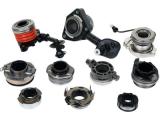 Clutch Release Bearing
Clutch Release Bearing is what presses down on the rotating spring plate or "pressure plate" to release the clutch disk. View More
Clutch Release Bearing
Clutch Release Bearing is what presses down on the rotating spring plate or "pressure plate" to release the clutch disk. View More Belt Tensioner
A Drive Belt Tensioner is a pulley mounted to either a spring mechanism or to an adjustable pivot point that is used to keep constant tension on your serpentine belt. View More
Belt Tensioner
A Drive Belt Tensioner is a pulley mounted to either a spring mechanism or to an adjustable pivot point that is used to keep constant tension on your serpentine belt. View More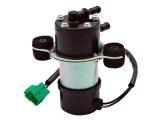 Fuel Pump
AiX provide you with the high quality of electric fuel pump and fuel pump assembly.Fuel pump assembly is one of the vital components of fuel injection system for EFI vehicle. View More
Fuel Pump
AiX provide you with the high quality of electric fuel pump and fuel pump assembly.Fuel pump assembly is one of the vital components of fuel injection system for EFI vehicle. View More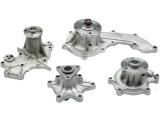 Water Pump
The reliable and effective operation of an automobile engine requires the cooperation of many parts. View More
Water Pump
The reliable and effective operation of an automobile engine requires the cooperation of many parts. View More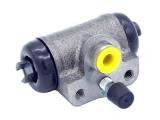 Wheel Brake Cylinder
When you want your car to slow down or stop, you need to take the brake operation. At this point, you need to step down your brake pedal. View More
Wheel Brake Cylinder
When you want your car to slow down or stop, you need to take the brake operation. At this point, you need to step down your brake pedal. View More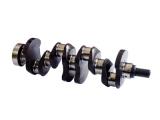 Crankshaft
Crankshaft is also known as crank.It is the important part of an engine to convert the up and down motion of the pistons into horizontal rotation.It is usually made by cast iron or forged steel. View More
Crankshaft
Crankshaft is also known as crank.It is the important part of an engine to convert the up and down motion of the pistons into horizontal rotation.It is usually made by cast iron or forged steel. View More VVT PHASER & OCV
VVT is the abbreviation of Variable Valve Timing. VVT PHASER is the vital component for the VVT engines. View More
VVT PHASER & OCV
VVT is the abbreviation of Variable Valve Timing. VVT PHASER is the vital component for the VVT engines. View More






 +86-18758057736
+86-18758057736 
 TEAM 21,XIEJIA VILLAGE, PUYANG TOWN, XIAOSHAN DISTRICT, Hangzhou, Zhejiang Province, China
TEAM 21,XIEJIA VILLAGE, PUYANG TOWN, XIAOSHAN DISTRICT, Hangzhou, Zhejiang Province, China 